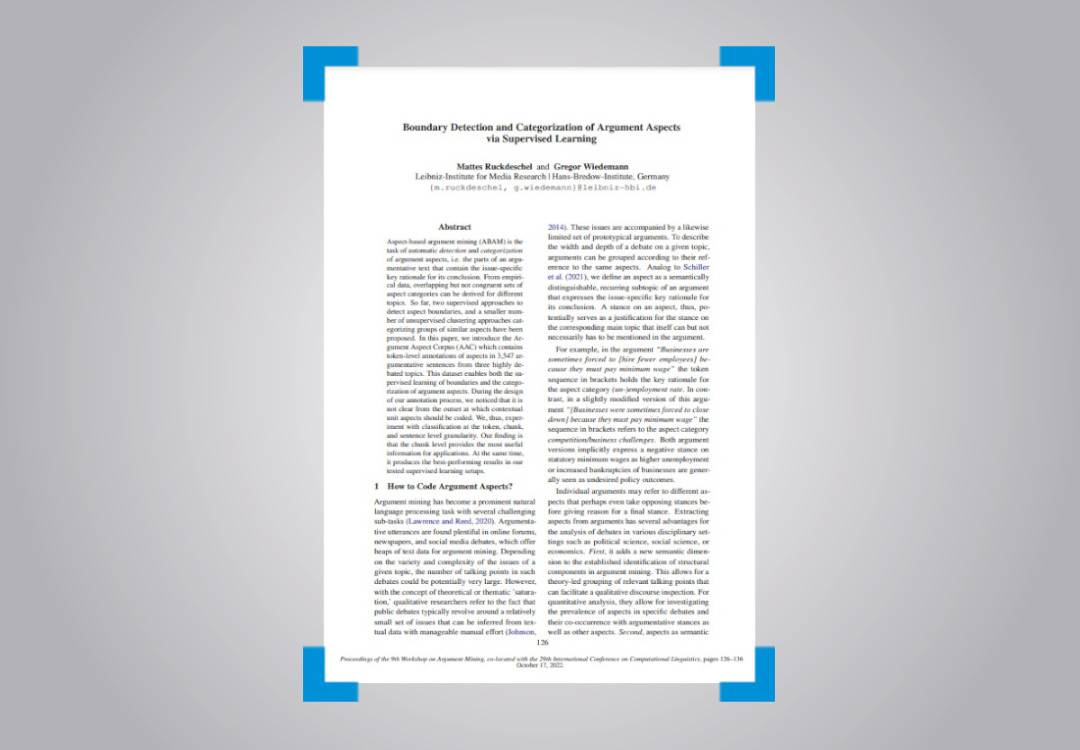In this conference paper, Mattes Ruckdeschel and Dr. Gregor Wiedemann describe analysis options for the automatic recognition of argument aspects, which are used to categorise pro/con arguments in terms of content. Based on the paper, argumentation patterns and their changes in public discourses, e.g. in news texts or tweets, can be examined automatically in detail. The peer-reviewed paper was presented at the 9th Workshop on Argument Mining.
You can download the article here (PDF)
Abstract
Aspect-based argument mining (ABAM) is the task of automatic detection and categorization of argument aspects, i.e. the parts of an argumentative text that contain the issue-specific key rationale for its conclusion. From empirical data, overlapping but not congruent sets of aspect categories can be derived for different topics. So far, two supervised approaches to detect aspect boundaries, and a smaller number of unsupervised clustering approaches categorizing groups of similar aspects have been proposed. In this paper, we introduce the Argument Aspect Corpus (AAC) which contains token-level annotations of aspects in 3,547 argumentative sentences from three highly debated topics. This dataset enables both the supervised learning of boundaries and the categorization of argument aspects. During the design of our annotation process, we noticed that it is not clear from the outset at which contextual unit aspects should be coded. We, thus, experiment with classification at the token, chunk, and sentence level granularity. Our finding is that the chunk level provides the most useful information for applications. At the same time, it produces the best-performing results in our tested supervised learning setups.
Ruckdeschel, M.; Wiedemann, G. (2022): Boundary Detection and Categorization of Argument Aspects via Supervised Learning. In: Proceedings of the 9th Workshop on Argument Mining, pages 126–136, Online and in Gyeongju, Republic of Korea. International Conference on Computational Linguistics. (pdf)


